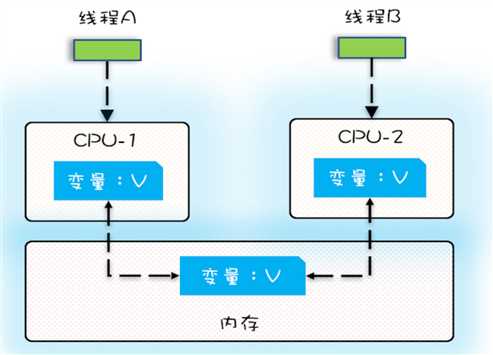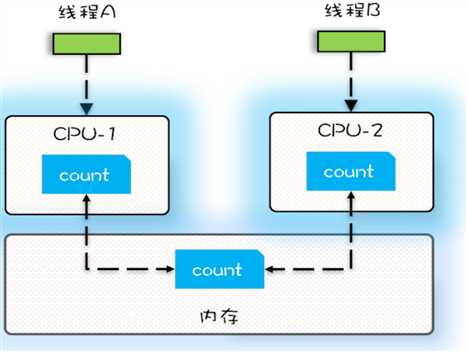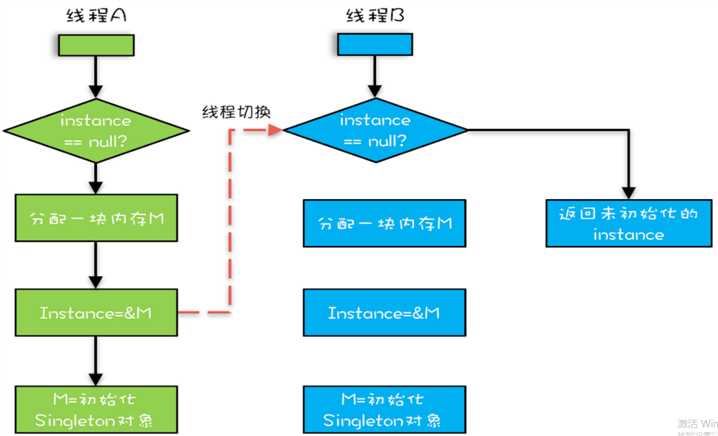由于CPU、内存、I/O 设备的速度差异,为了合理利用 CPU 的高性能,平衡这三者的速度差异,计算机体系机构、操作系统、编译程序都做出以下处理:

public class Test {
private long count = 0;
private void add10K() {
int idx = 0;
while(idx++ < 10000) {
count += 1;
}
}
public static long calc() {
final Test test = new Test();
// 创建两个线程,执行 add() 操作
Thread th1 = new Thread(()->{
test.add10K();
});
Thread th2 = new Thread(()->{
test.add10K();
});
// 启动两个线程
th1.start();
th2.start();
// 等待两个线程执行结束
th1.join();
th2.join();
return count;
}
}

指令 1:首先,需要把变量 count 从内存加载到 CPU 的寄存器; 指令 2:之后,在寄存器中执行 +1 操作; 指令 3:最后,将结果写入内存(缓存机制导致可能写入的是 CPU 缓存而不是内存)。

public class Singleton {
static Singleton instance;
static Singleton getInstance(){
if (instance == null) {
synchronized(Singleton.class) {
if (instance == null)
instance = new Singleton();
}
}
return instance;
}
}

并发编程(一)--并发编程问题源头(可见性、原子性和有序性问题)
原文:https://www.cnblogs.com/flgb/p/10909382.html